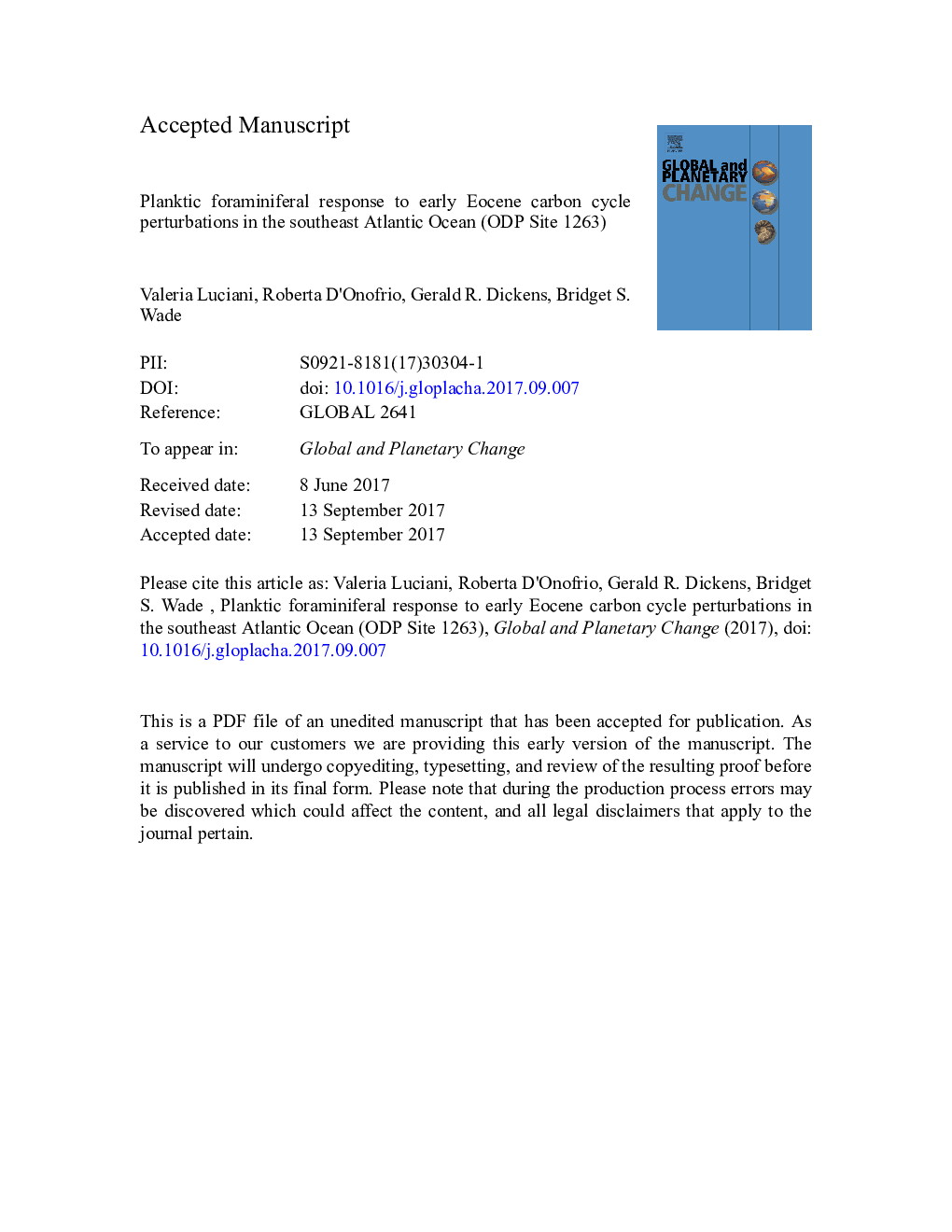| Article ID | Journal | Published Year | Pages | File Type |
|---|---|---|---|---|
| 5755213 | Global and Planetary Change | 2017 | 68 Pages |
Abstract
At low latitude locations in the northern hemisphere, striking changes in the relative abundances and diversity of the two dominant planktic foraminifera genera, Morozovella and Acarinina, are known to have occurred close to the Early Eocene Climatic Optimum (EECO; ~ 49-53 Ma). Lower Eocene carbonate-rich sediments at Ocean Drilling Program (ODP) Site 1263 were deposited on a bathymetric high (Walvis Ridge) at ~ 40° S, and afford an opportunity to examine such planktic foraminiferal assemblage changes in a temperate southern hemisphere setting. We present here quantified counts of early Eocene planktic foraminiferal assemblages from Hole 1263B, along with bulk sediment stable isotope analyses and proxy measurements for carbonate dissolution. The bulk sediment δ13C record at Site 1263 resembles similar records generated elsewhere, such that known and inferred hyperthermal events can be readily identified. Although some carbonate dissolution has occurred, the well-preserved planktic foraminiferal assemblages mostly represent primary changes in environmental conditions. Our results document the permanent decrease in Morozovella abundance and increase in Acarinina abundance at the beginning of the EECO, although this switch occurred ~ 165 kyr after that at low-latitude northern hemisphere locations. This suggests that unfavourable environmental conditions for morozovellids at the start of the EECO, such as sustained passage of a temperature threshold or other changes in surface waters, occurred at lower latitudes first. The remarkable turnover from Morozovella to Acarinina was widely geographically widespread, although the causal mechanism remains elusive. In addition, at Site 1263, we document the virtual disappearance within the EECO of the biserial chiloguembelinids, commonly considered as inhabiting intermediate water depths, and a reduction in abundance of the thermocline-dwelling subbotinids. We interpret these changes as signals of subsurface water properties, perhaps warming, and the associated contraction of ecological niches.
Keywords
Related Topics
Physical Sciences and Engineering
Earth and Planetary Sciences
Earth-Surface Processes
Authors
Valeria Luciani, Roberta D'Onofrio, Gerald R. Dickens, Bridget S. Wade,
